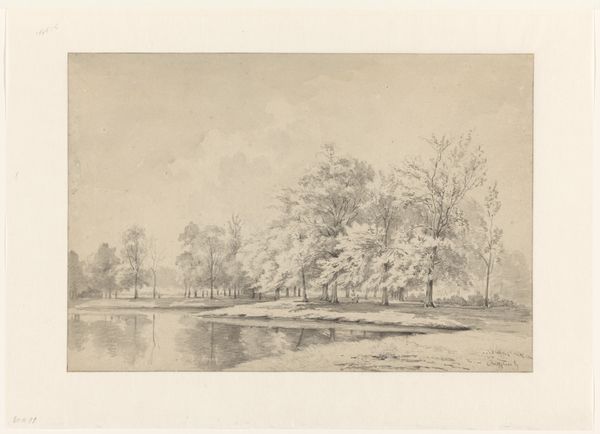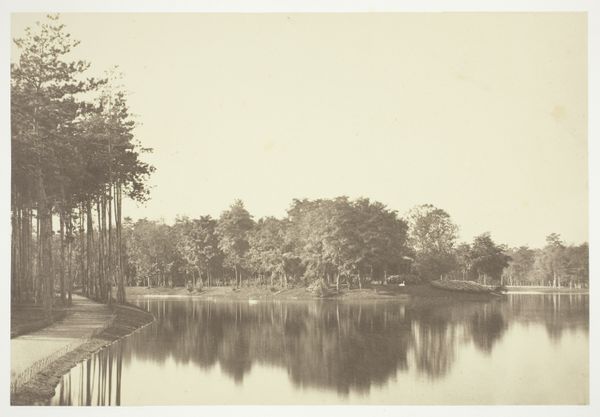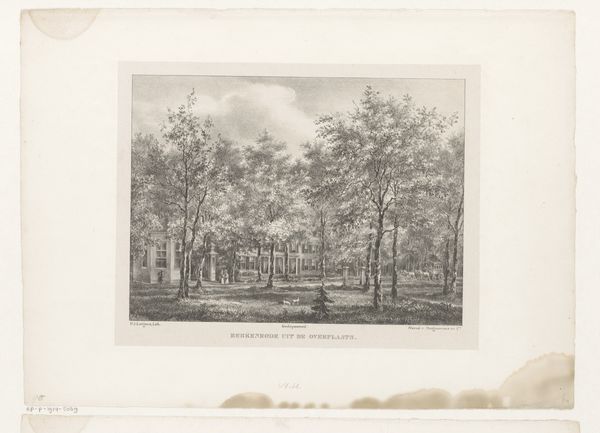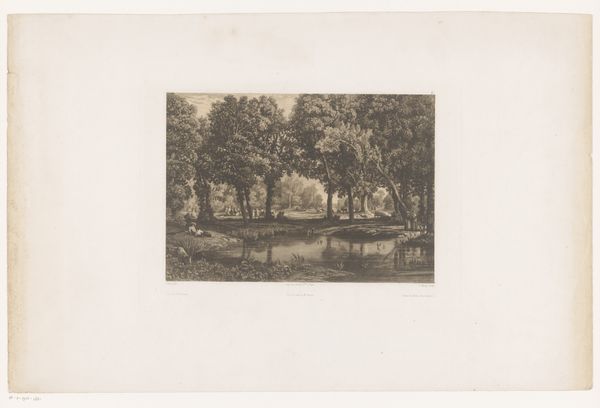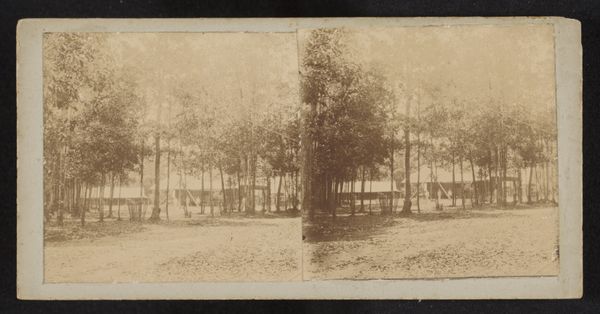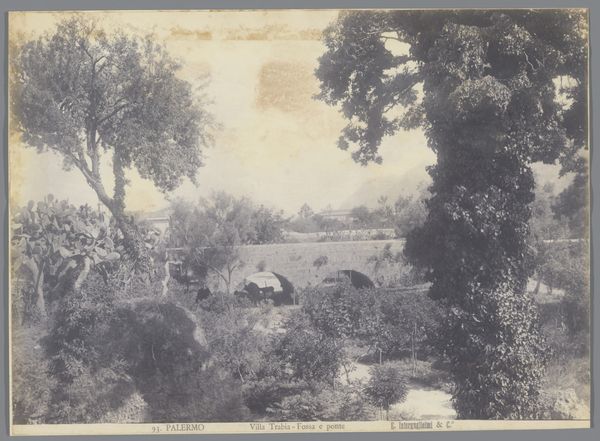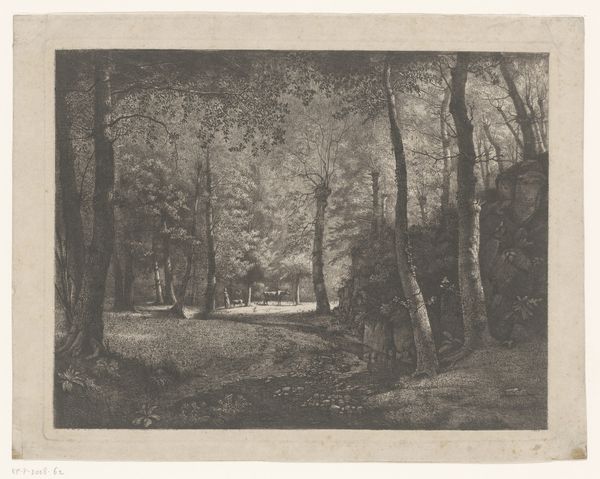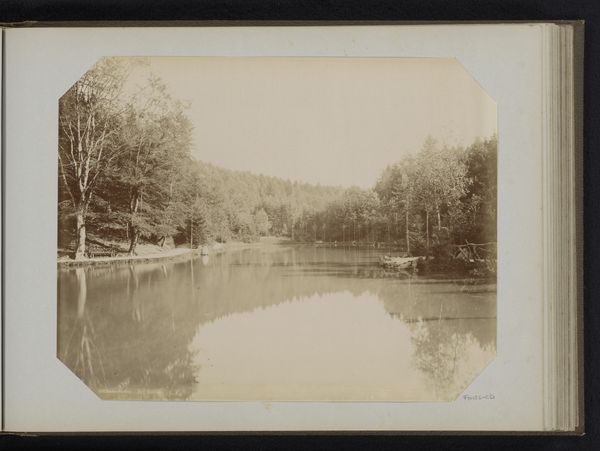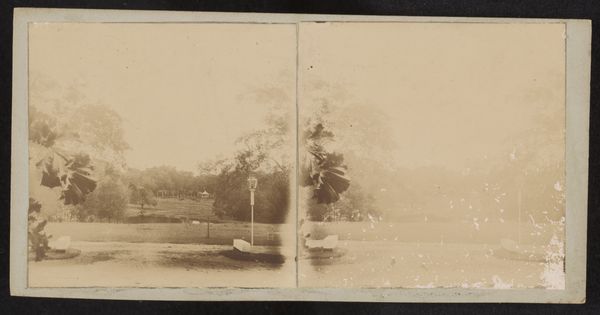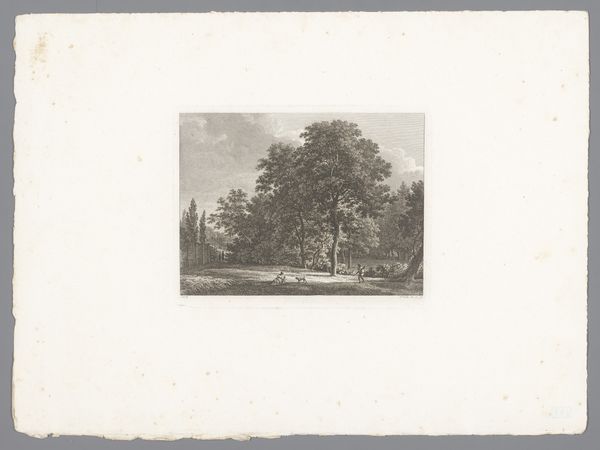
Fotoreproductie van een prent van een huis aan het water in de omgeving van Delft 1850 - 1900
0:00
0:00
photography, gelatin-silver-print
#
dutch-golden-age
#
ink paper printed
#
landscape
#
photography
#
coloured pencil
#
gelatin-silver-print
#
cityscape
#
watercolor
#
realism
Dimensions: height 63 mm, width 101 mm
Copyright: Rijks Museum: Open Domain
Curator: This gelatin-silver print, likely taken between 1850 and 1900, captures a house by the water near Delft. The photographer is thought to be Hendrik Rudolph Voet. What’s your first impression? Editor: Immediately, I notice the subtle tonal range. The photographer masterfully utilizes a limited palette, focusing on the interplay of light and shadow to create depth and form. The water acts as a kind of mirror, reflecting the scene, thus almost doubling it. Curator: I'm drawn to the communal aspect it captures. People populate the scene, interacting casually along the waterfront. It's not just a house by the water, it is an image of social life near Delft in this era. The bridge, almost centered, becomes an emblematic structure. Editor: Indeed. But the composition leads the eye deliberately from that left-side bridge and along the horizontal plane defined by the water's edge. The line of trees emphasizes this linearity, structuring the space. I'm struck by the geometrical division in the image’s elements. Curator: Symbolically, water represents fluidity, adaptability, life; the house is stability, home. But those trees could be taken as an allusion to nature reclaiming built spaces. Perhaps the artist subtly encoded his impressions of the relation of country and city life into the print. Editor: An intriguing reading! For me, though, the surface itself compels – the way the gelatin-silver medium captures subtle light variations, rendering a scene both realistic and dreamlike. The textures within the print suggest an attempt at the Realist style, albeit subdued by the limits of the photographic technology available then. Curator: Considering the probable timeframe of the print, that rings true. Thanks to the artist's photographic method, what would’ve been an ordinary vista now encapsulates more, an era itself is represented through this captured image. Editor: It highlights how photographic technology was, even then, allowing us to explore and record our evolving understanding of space and visual composition. Curator: It's more than documentation; it's a frozen moment in history. Editor: Yes, well framed too. Thank you for walking me through that.
Comments
No comments
Be the first to comment and join the conversation on the ultimate creative platform.
